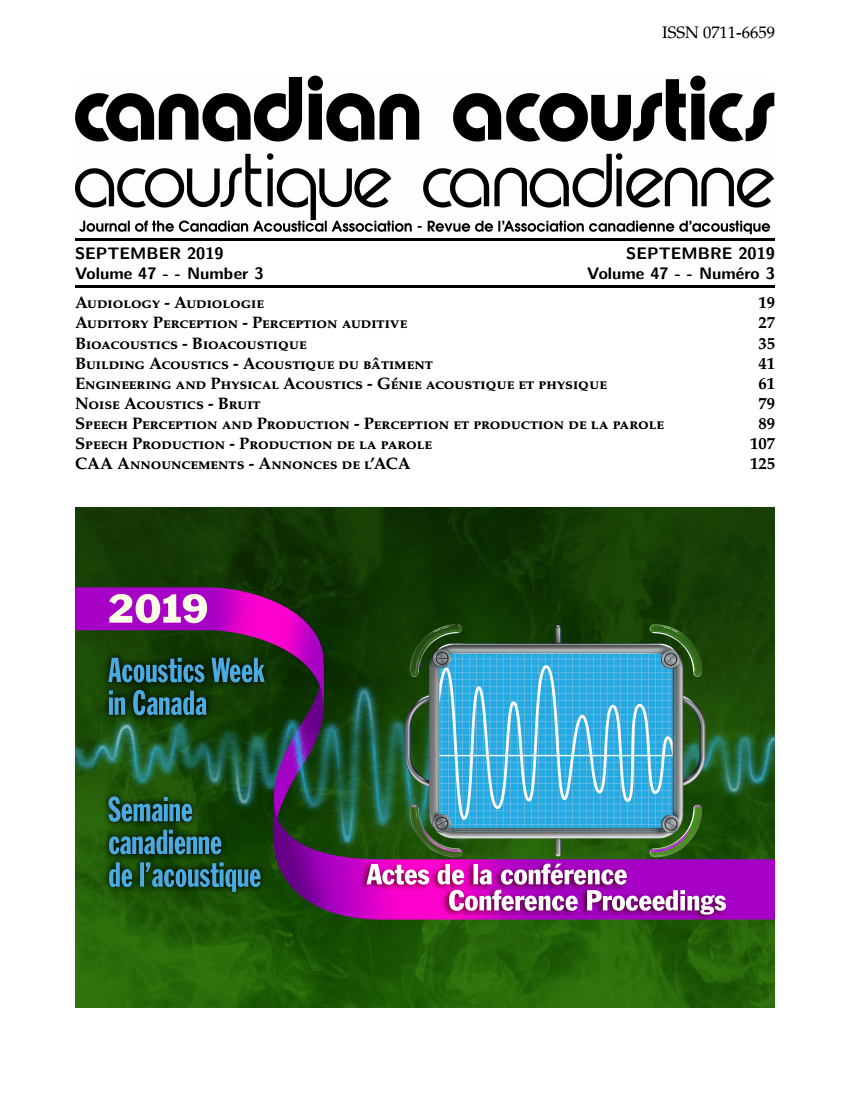The Effects of Outer Space on Vowel Space
Abstract
After returning from the Expedition 35 space mission, astronaut Chris Hadfield reported that he had learned to speak with a weightless tongue in space, and that his tongue and lips felt heavy on landing. Such comments indicate that gravity has a substantial effect on speech articulation. Previous work has investigated the effects of altered gravity in space travel on speech production [Yu & Hansen (2017) JASA 141, 1605], however the audio assessed was from the 1969 Apollo Moon landings, and thus of poor quality due to technological limitations. These technological limitations resulted in a lack of appropriate data, eg; F1 and F2 were only assessed for one vowel, with only F1 investigated for the remaining vowels. The present analysis makes use of higher quality audio from the more recent STS-134 mission in 2011, and investigates F1 and F2 of astronaut Mark Kelly before, during, and immediately after the STS-134 mission. Approximately 90 seconds of audio from each condition (1. pre-launch interview, 2. in-space interview, 3. post-landing tarmac interview) was assessed using automated alignment and formant extraction via the Dartmouth Linguistic Automation suite (DARLA). Plotted vowel spaces from each condition suggest substantial reduction of vowel spaces in both the in-space and post-landing conditions. Three way ANOVA’s comparing F1 and F2 across all conditions indicate significant differences for all high vowels, especially for F1 which corresponds to vowel height. These observations corroborate Chris Hadfield’s descriptions that altered gravity results in observable impairments to speech motor control.
Additional Files
Published
How to Cite
Issue
Section
License
Author Licensing Addendum
This Licensing Addendum ("Addendum") is entered into between the undersigned Author(s) and Canadian Acoustics journal published by the Canadian Acoustical Association (hereinafter referred to as the "Publisher"). The Author(s) and the Publisher agree as follows:
-
Retained Rights: The Author(s) retain(s) the following rights:
- The right to reproduce, distribute, and publicly display the Work on the Author's personal website or the website of the Author's institution.
- The right to use the Work in the Author's teaching activities and presentations.
- The right to include the Work in a compilation for the Author's personal use, not for sale.
-
Grant of License: The Author(s) grant(s) to the Publisher a worldwide exclusive license to publish, reproduce, distribute, and display the Work in Canadian Acoustics and any other formats and media deemed appropriate by the Publisher.
-
Attribution: The Publisher agrees to include proper attribution to the Author(s) in all publications and reproductions of the Work.
-
No Conflict: This Addendum is intended to be in harmony with, and not in conflict with, the terms and conditions of the original agreement entered into between the Author(s) and the Publisher.
-
Copyright Clause: Copyright on articles is held by the Author(s). The corresponding Author has the right to grant on behalf of all Authors and does grant on behalf of all Authors, a worldwide exclusive license to the Publisher and its licensees in perpetuity, in all forms, formats, and media (whether known now or created in the future), including but not limited to the rights to publish, reproduce, distribute, display, store, translate, create adaptations, reprints, include within collections, and create summaries, extracts, and/or abstracts of the Contribution.


